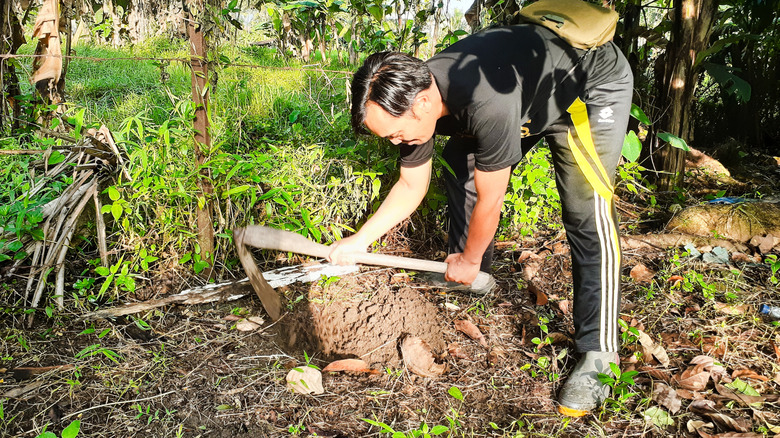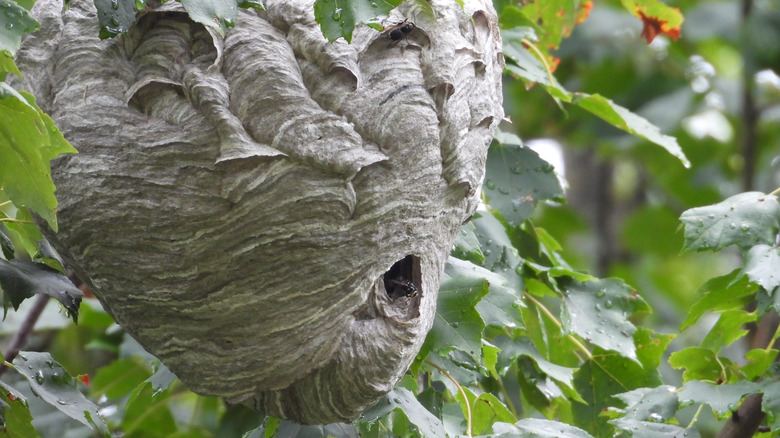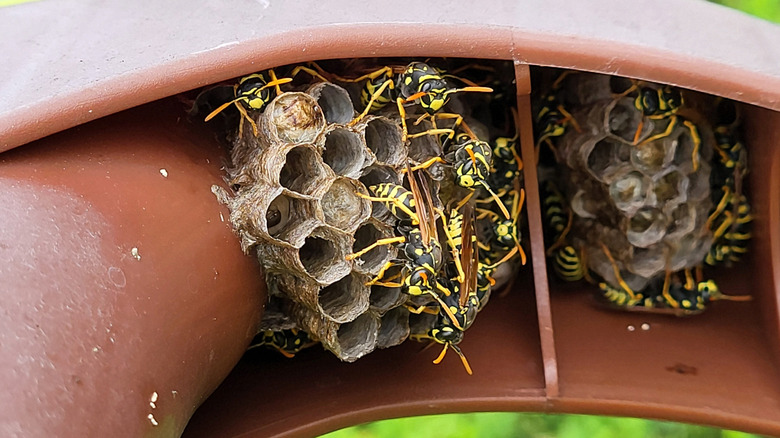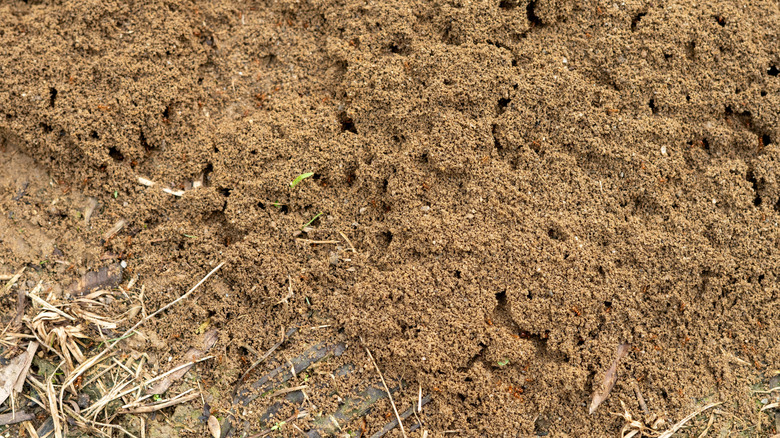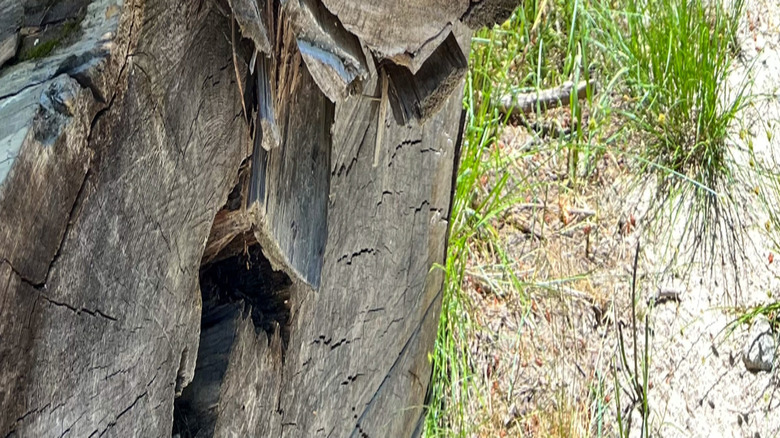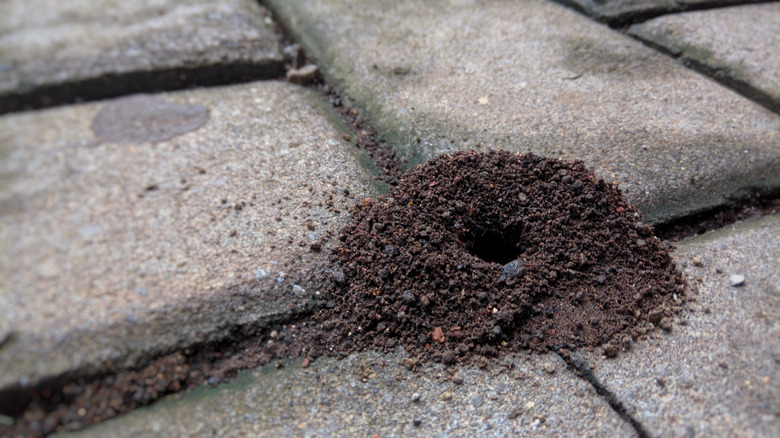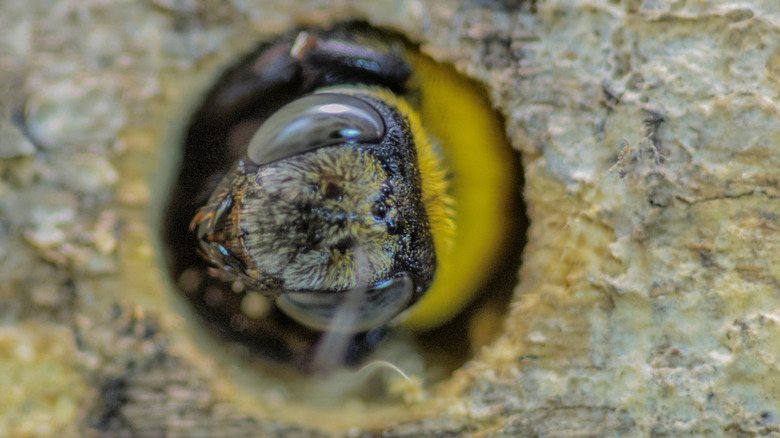What Type Of Nest Is In Your Yard: 8 Ways To Identify Common Pests
Pests find and create homes in all sorts of ways, and you don't want to find out the hard way which type has taken up residence in your yard. Imagine your child playing in the grass, thinking they found a cool ant hill, only to discover you actually have an infestation of fire ants. Or perhaps you have common pests lurking in your gutters, like wasps that swarm with a vengeance when you try to do some spring cleaning. Whether you've lived in your home for years or you're trying to keep an eye out for potential pest problems before buying a home, you'll want to be aware of how to spot common pest nests.
Some pests, like hornets and wasps, make large, elaborate nests that attach to trees or hanging structures. But hanging nests aren't the only thing you should keep an eye out for. Mud daubers, fire ants, termites, and pavement ants use dirt and mud to create tunnels that mound up in the soil or on walls and other vertical structures. Some of these nests can get quite large if they are left alone too long. Other nests from wood-boring pests like carpenter ants and carpenter bees can be much less obvious but very damaging. Each of these 8 pests has specific nesting characteristics that can help you identify these common pests that might be hanging out in your yard.
Hornets
Hornet nests are commonly confused with wasp nests, but there are some key differences to look out for. First, the appearance. A hornet's nest is generally a large, papery structure built in a spherical shape. Depending on the type of hornet, you may find them hanging around in sheltered areas like trees, shrubs, or overhanging areas of your home. If you find a hornet's nest in your yard, you will want to handle the situation with caution and learn about the dangers of aggressive hornets, especially in the fall.
Paper Wasps
Unlike hornet nests, paper wasp nests aren't closed structures. They can look similar at the top with a papery dome shape; however, they are open at the bottom with honeycomb-shaped openings. They are almost always found under a protected structure. This could be large overhangs, but it can also be any type of crack or crevice that is protected from the rain. For this reason, nests tend to go unnoticed until they have been disturbed. Paper wasps are not as aggressive as hornets, but they will sting after swarming if their territory is threatened.
Mud daubers
Mud daubers are not aggressive, like other types of wasps or hornets, but they are still considered pests because of their nesting habits. As the name suggests, they use mud to create their nests, where they lay their eggs and feed their young. The nests are long, tubular mud structures plastered to the sides of walls or standing structures. They don't need to be removed for safety. However, if you want to remove them, you can knock down the nest yourself and leave it. There is no need to get help from a professional.
Fire ants
Not all fire ants are the same. In fact, there are several types of fire ants that you might find in your yard, but all species generally nest in large groups in the soil. Fire ant nests are usually large mounds of soil that have no single entry hole. Depending on the soil and the size of the colony, you may find it difficult to spot a nest, or it may be a very distinct mound. If fire ants are present in your yard, you can find them in the lawn, garden beds, pathways, or near water sources.
Carpenter ants
Carpenter ants are a major nuisance in and around homes because they can cause significant damage to wooden structures. You may have a hard time finding a carpenter ant nest. Most often, you will see the ants themselves or sawdust from their work before you spot a nest. That is because carpenter ant nests are usually hidden in the wood itself. The best method for finding a carpenter ant nest is to observe worker ants and follow them back to their nest between sunset and midnight. Professional pest control is usually the best method for getting rid of carpenter ants.
Pavement ants
Pavement ants aren't as destructive as carpenter ants or as dangerous as fire ants, but they are still considered pests in many areas. The most common issue with pavement ants is when they start looking for food inside the house, which is mostly an annoyance. Their nests are easy to spot and recognize. As the name suggests, they generally build their nests in cracks in the pavement or between slabs in walkways or driveways. You will likely see a small mound of soil peaking out of the pavement with a single entry hole.
Carpenter bees
Similar to carpenter ants, carpenter bees pose a serious threat to your woodwork that can lead to structural damage. Plus, the nests are not easy to find. Carpenter bees live alone, so their nests appear as a single hole in wood where the bees bore a tunnel to hold their young. They are not aggressive, but females can sting when they are physically threatened. You may also see yellow residue around the entry hole. Once you get rid of their nest, consider trying the paper bag hack to repel carpenter ants from your home.
Termites
Termites are well-known for causing serious structural damage to homes and other wooden buildings. There are actually several different ways termites can nest, depending on what they are feeding on. Mounds are one type of termite nest that is easily recognizable as it rises out of the ground in a tall structure or near decaying trees. Subterranean nests are difficult to spot because they are almost entirely underground, but you may see cardboard-like scraps or small papery structures with holes that indicate the entrance to the nest. They can also build nests on structures with long tunnels leading out and away from the main nest.
